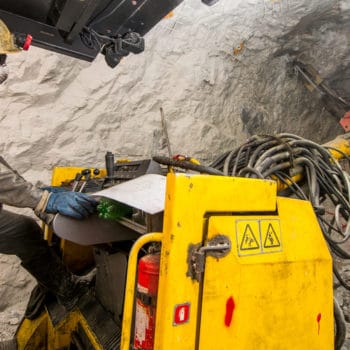Why We Love It
-
$36,930Potential Avg. Salary
-
-0.5%Job Growth Rate
-
Don't Take Work HomeCareer Attribute
-
Flexible HoursCareer Attribute
Loggers, also known as lumberjacks, are part of the timber industry. They are responsible for cutting down various types of trees into desired lengths, using specialty equipment like tree harvesters.
Recommended Schools
What is a Logger?
Duties
The duties of a logger are as specified below:
- Classify logs by different types of wood and species, for loading onto heavy duty vehicles like trucks or tractors.
- Use chains or cable to securely place logs onto a towing vehicle for the purpose of taking to the landing or deck area.
- Utilise specialty logging equipment like chainsaws, feller-buncher tree harvesters, to process lumber into logs as specific lengths.
- Determine which grade to assign cut logs according to criteria such as straightness, knot size, etc.
- Conduct regular inspections and maintenance of equipment for optimal safety conditions.
Day In The Life
The profession of a logger is one of the most demanding and dangerous jobs in the country. It is a rewarding career for individuals who are motivated by the adventurous aspect of the job, including the prospect of spending most of their life outdoors. Your day will start bright and early around 6 am in the morning, by which time you would reach the job site. Loggers have to often work in challenging and heavily forested regions of states like Montana, California, Washington and British Columbia.
The basic function of every logger, irrespective of rank, is chopping down a wide variety of trees. There are different kinds of logging workers that form an entire logging crew. For instance, as a choke setter, you would primarily be responsible for tying down logs using strap hooks, chains or cables. This is particularly risky, as the cable hook may break and cause a serious accident. If you are a feller, you will be using a chainsaw to fell trees – this includes sawing a wedge in the desired direction that the tree is expected to fall.
Work Schedule
Working as a logger can involve long commutes from the home to your logging site. The majority of any logging work strenuous activities such as lifting, climbing, etc. even though machinery has minimized the need for heavy labor. The job availability might also be on a seasonal basis – i.e. maximum jobs capitalize on summer weather as working in snowy and extremely cold weather becomes extremely tough. You can expect to spend all your time outdoors in varied conditions, like snow, sleet, heat and muddy grounds. Most loggers work full-time at thirty-six to forty hours per week on average. Dangers of working in this profession include accidents related to rough terrain, falling trees and operating heavy equipment for cutting logs.
Growth Of The Job
Future job prospects for aspiring loggers is fairly promising over the next five years. New opportunities will emerge from the need to replace workers that are leaving permanently or retiring from the profession. As loggers gain more experience, they will be promoted to working in a supervisory capacity with logging crews, maintaining and repairing specialty logging equipment or machinery, etc. Some also go on to become truck or tractor drivers, and equipment operators.
Typical Employers
As a logger, you can expect to work for lumber or timber companies around the country. You may also find employment with state and national forest associations.
Recommended Schools
How To Become a Logger
There are no specific requirements for individuals interested to become a logger for their professional career. Most logging firms however, require a minimum of a high school diploma. Some courses that will come in handy from high school include relevant subject areas like mathematics, computer applications, agriculture and natural resources management. Loggers are typically trained on the job, in often isolated areas of the wilderness. Individuals that prefer the outdoors and are physically strong will have an advantage over other candidates. Many loggers have extensive experience in physically demanding activity or sports.
Depending on the state in which you work, there are specified training requirements before you can undertake job responsibilities. The common facet of each of these programs include an emphasis on technical instruction and field training in reforestation, management techniques and environmental standards.
As a full-time logger, you must also participate in safety training. There are training sessions from logging groups for logging equipment operators – those that operate large machinery, who need to demonstrate superior skill in the field with regard to diverse logging processes. Some training programs also offer a safety certification for the logging company, once participation is complete.
Logger Salary Data
We’ve provided you the following to learn more about this career. The salary and growth data on this page comes from recently published Bureau of Labor Statistics data while the recommendations and editorial content are based on our research.
National Anual Salary
Low Range
$28,820Average
$36,930High Range
$50,860National Hourly Wage
Low Range
$14/hrAverage
$18/hrHigh Range
$24/hrHow do Logger salaries stack up to other jobs across the country? Based on the latest jobs data nationwide, Logger's can make an average annual salary of $36,930, or $18 per hour. This makes it an Above Average Salary. On the lower end, they can make $28,820 or $14 per hour, perhaps when just starting out or based on the state you live in.
Salary Rankings And Facts
#586 Nationally for All Careers
Highest Education Among Loggers
- 0% Doctorate
- 0.1% Masters
- 2.4% Bachelors
- 2.6% Associates
- 12.3% College
- 47.3% High School
- 35.4% Less than High School
Job Growth Projections and Forecast
2014 Total Jobs
37,3002024 Est. Jobs
37,100Job Growth Rate
-0.5%Est. New Jobs
-200How does Logger job growth stack up to other jobs across the country? By 2024, there will be a change of -200 jobs for a total of 37,100 people employed in the career nationwide. This is a -0.5% change in growth over the next ten years, giving the career a growth rate nationwide of Below Average.
Growth Rankings And Facts
#625 Nationally for All Careers
What Companies Employ The Most Loggers
| Industry | Current Jobs | New Jobs Needed | % Increase |
|---|---|---|---|
| Logging | 22,400 | -1,100 | -1% |
| Self-employed workers | 8,500 | -500 | -1% |
| Sawmills and wood preservation | 2,300 | 400 | 0% |













